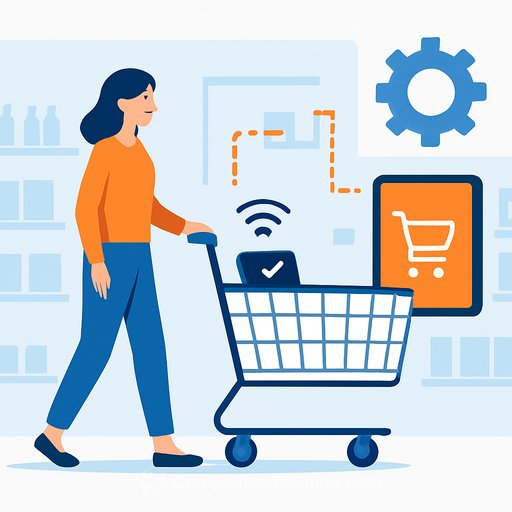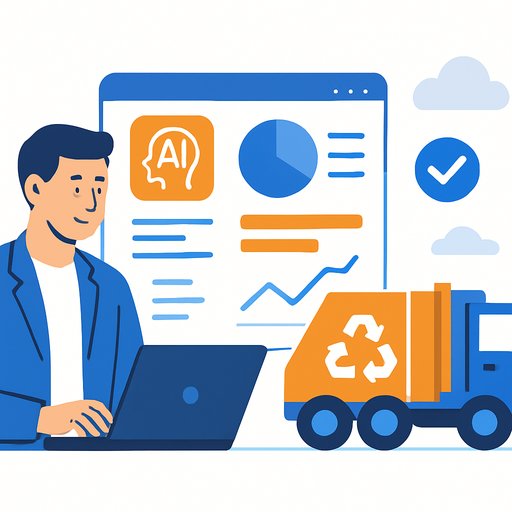The New Inbound: Spara Raises $15M to Build a 'Superhero' AI for B2B Sales
Inbound is where buyers show intent. That's also where deals stall. Spara just raised $15M to fix that with an AI agent that sits at the front door, answers real questions, qualifies intent, and routes the next best step-without breaking your CRM workflows.
The goal: fewer forms, faster answers, cleaner handoffs, and sales reps who walk into calls with context, not guesswork.
Why this matters for sales
- AI agents can run 24/7 and handle high-volume, one-to-one conversations the moment interest appears.
- They qualify on first-party intent (what prospects ask), not just firmographics.
- They plug into tools like Salesforce and HubSpot, so your team doesn't have to change habits to see the lift.
As one founder put it: "Prospects will tell you what they're looking for through the questions they ask." That makes the first interaction the most valuable data source in your funnel.
Rewiring the first conversation
Most B2B evaluations begin with a buyer scanning 10 vendors that claim to do everything. The deal hinges on the one or two jobs that matter to them. Spara's bet: capture that intent instantly, answer well, and move the prospect to the next right step-demo, pricing, security info, or a direct handoff.
Instead of long forms or a slow discovery path, the AI meets the buyer in chat (and increasingly, voice), shares relevant media on the fly, and records which topics actually matter-SOC 2, a workflow, a KPI, ROI math. That's a different signal than "500 employees in X industry." It's real intent. For context on security questions buyers ask, see SOC 2.
Proof it moves the numbers
A case study with business-banking platform Rho reported a 3x increase in meetings booked after deploying Spara on their website-while improving prequalification and sending reps into calls with the prospect's stated priorities.
That combination-more throughput, fewer wasted cycles-compounds fast when your team spends time only where there's real intent.
From data exhaust to deal fuel
Every question asked on the way to a meeting becomes structured feedback. Marketing learns which topics attract the right buyers, which questions cause drop-off, and which assets win trust. Sales Enablement gets a punch list for better collateral and call prep. Product gets a backlog informed by live demand, not guesses.
It also reframes lead quality. Instead of "good/bad," you get "asked about A, B, C-none map to our product." That saves reps time and gives marketing a content brief.
Voice is coming for inbound
Chat still leads, but voice is catching up. More buyers are getting comfortable talking to AI because it's faster than typing and closer to a live rep experience. If your inbound path can answer tough questions over voice, you'll win speed and trust in the first two minutes.
What this means for your sales org
- Inbound triage changes. Less manual sorting. More time closing.
- Handoffs get cleaner. Reps receive intent transcripts and priority topics before the call.
- Headcount leverage improves. More meetings per rep, and better prepared ones.
Quick implementation checklist
- Define "qualified" by intent: top 5 questions that correlate with pipeline and win rate.
- Integrate your CRM (Salesforce/HubSpot) and map fields for topics, objections, assets shown, and next step.
- Attach assets to answers: security one-pager, ROI calculator, product videos, architecture diagrams.
- Stand up voice and chat entry points on high-intent pages (pricing, solutions, integrations).
- Create a rep briefing template: buyer questions, assets viewed, objection list, and proposed agenda.
- Set SLAs for AI-to-rep handoffs and auto-booking rules.
Metrics to watch
- Meeting conversion from high-intent pages
- Time-to-first-answer and time-to-first-meeting
- Rep prep time per meeting and no-show rate
- Pipeline created per 100 inbound sessions
- Win rate by intent profile (topics asked)
Sidebar: Stablecoins, Custody, and Faster B2B Payments
Anchorage Digital Bank is launching payment stablecoins under the GENIUS Act framework, with reserves custodied by U.S. Bank. Translation for sales: large, regulated players are moving stablecoin payments into the mainstream of corporate finance.
Why you should care:
- Shorter settlement cycles can pull revenue forward and reduce deal friction, especially for international buyers.
- Stronger compliance signals (KYC/AML, 1:1 high-quality liquid assets) ease finance and legal concerns.
- Enterprises will ask vendors if they support new payment options-be ready with a clear "yes/no" and rationale.
Action for sales leaders
- Add "payment method flexibility" to late-stage checklists and security FAQs.
- Coordinate with Finance on policy, pricing, and reconciliation before buyers ask.
- Update proposals and MSAs to reflect supported methods and any fee or timing differences.
Make your team AI-ready
If you're building an inbound motion that blends AI, CRM, and enablement, upskilling your team is the force multiplier. Explore practical programs for sales and RevOps here: AI courses by job.
The bottom line
Inbound is no longer a contact form and a queue. It's a live, high-intent channel. AI agents that answer well, qualify by what buyers actually ask, and plug into your CRM will raise throughput and prepare reps to close. Pair that with modern payment rails, and you remove even more friction from the path to revenue.
Your membership also unlocks:






